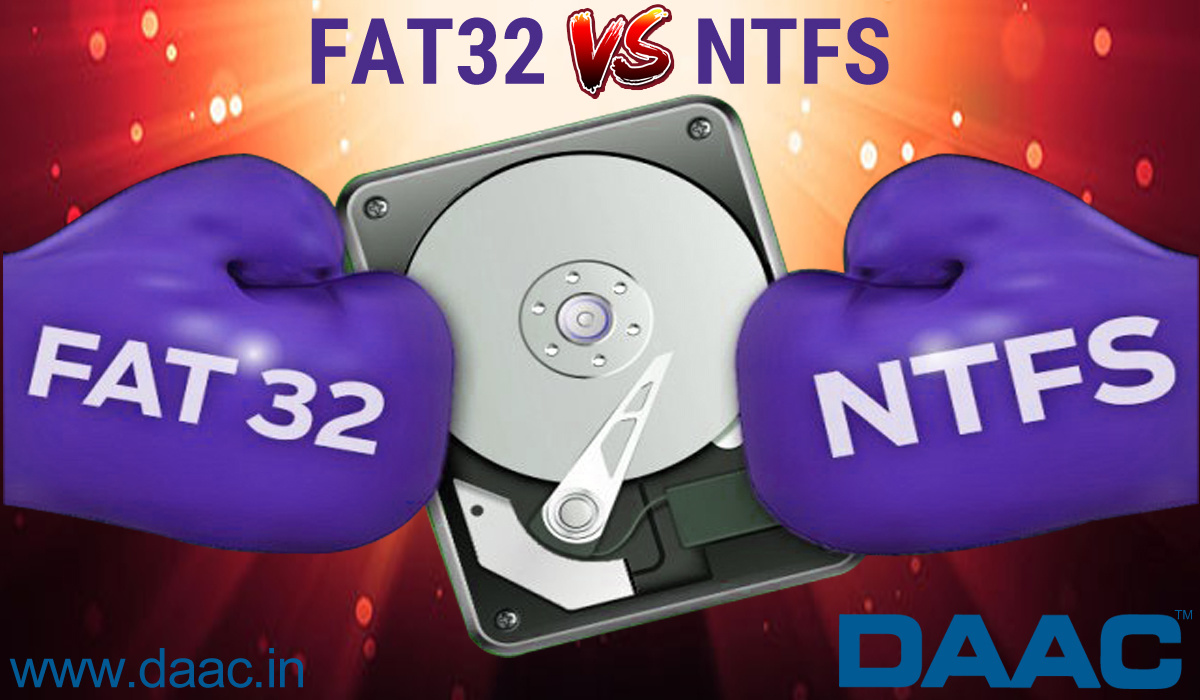Difference Between FAT32 and NTFS File Format

When you have a new hard drive, or once you are reinstalling Windows, the OS could ask you to format the drive. If given a selection, the 2 common modes are NTFS and FAT32. however what are those, and why would you choose one over the other? we tend to break down the variations between FAT32 vs. NTFS. FAT32 is that the older of the 2 drive formats. FAT32 is that the commonest version of the FAT (File Allocation Table) filing system created back in 1977 by Microsoft. It eventually found its approach on the IBM PC's PC-DOS in 1981, and carried over to MS-DOS when that became a standalone product. FAT had been the quality format for floppy disks and exhausting drives throughout the DOS years, and versions of Windows up to and together with Windows 8. NTFS (New Technology Files System) is that the newer drive format. Microsoft introduced NTFS in 1993, as a part of the corporate-oriented Windows nt 3.1 and so Windows 2000, although it did not become common on client PCs until Windows XP in 2001. Windows 7 and 8 default to NTFS format on new PCs. Winter Training Program in Jaipur | New IT Batches Starting Now Difference in Compatibility- FAT32 is read/write compatible with a majority of recent and recently obsolete operating systems, as well as DOS, most flavors of Windows (up to and as well as 8), Mac OS X, and lots of flavors of UNIX-descended operating systems, as well as UNIX system and FreeBSD. NTFS, on the opposite hand, is totally read/write compatible with Windows from Windows NT 3.1 and Windows XP up to and as well as Windows 8. Macintosh OS X 10.3 and on the far side have NFTS read capabilities, however, writing to an NTFS volume requires a 3rd party software system utility like Paragon NTFS for Mac. There are alternative hacks and workarounds for NTFS on the mac, however, in any case, NTFS is just semi-compatible with OS X. NTFS on Linux systems is inconsistent for each scan and write operations. explore for NTFS-3G driver support on your Linux support page to see if it's built-in. The difference in File size matters - FAT32 file size support superior out at 4GB and volume size tops out at 2TB. this suggests that you are restricted to 2TB FAT32 partitions if you would like to use a 4TB drive. It also means you're limited to 4GB files. this is often a priority with uncompressed high-definition moving picture files, wherever 30GB files aren't remarkable. NTFS is limited by design to 16EB (Exabytes). One Exabyte is that the equivalent of 1 billion Gigabytes, thus we're quite a ways in which away from maxing out NTFS. In practice, two to 4TB volumes are the limit at this time. Larger volumes would require a 64-bit OS and compatible hardware. The difference in Fast Processing - While file transfer speed and most output is restricted by the slowest link (usually the hard drive interface to the computer like SATA or a network interface like 3G WWAN), NTFS formatted hard drives have tested faster on benchmark tests than FAT32 formatted drives. alternative factors are going to be in play, however, as well as drive technology (HDD vs. SDD, Flash vs. non-Flash, etc.) and file fragmentation (on spinning drives). While your OS sometimes makes the selection of hard drive format for you earlier than time, you'll select which format when you are reformatting a drive, particularly AN external drive. If you would like the drive for Windows-only surroundings, NTFS is the best choice. If you need to exchange files (even occasionally) with a non-Windows system sort of a macintosh or Linux box, then FAT32 can provide you with less agita, as long as your file sizes are smaller than 4GB.
